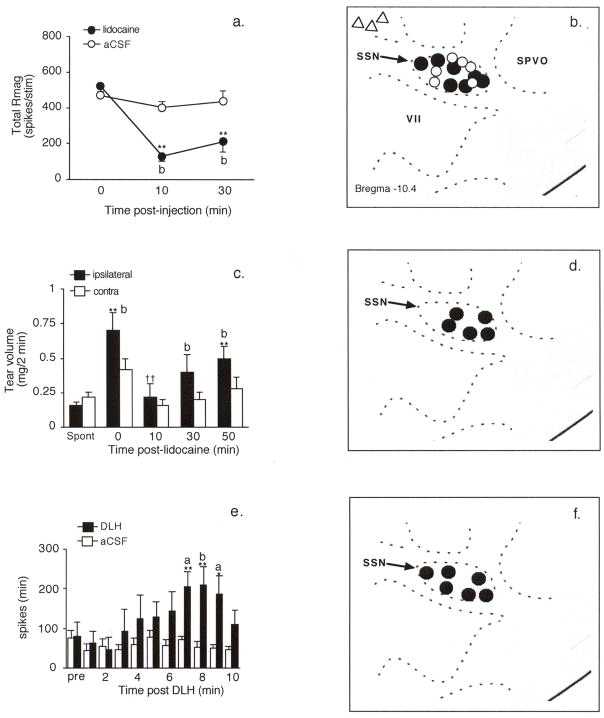Figure 4.
The superior salivatory nucleus (SSN) is critical for light-evoked responses by Vc/C1 neurons. a. Ipsilateral SSN injection of lidocaine (2%, 100 nl) blocks the Rmag to high intensity light stimulation. **P < 0.01 versus 0 min; b = P < 0.01 versus artificial CSF (aCSF) injected group. b. Lidocaine (solid circles) and vehicle (open circles) injection sites in SSN. Off-target injections of lidocaine are represented by open triangles. c. Light-evoked increase in tear volume is prevented by lidocaine blockade of the ipsilateral SSN. **P < 0.01 versus spontaneous tear value; b = P < 0.01 versus contralateral side; ††P < 0.01 versus light evoked tears at 0 min. d. Lidocaine injection sites in SSN ipsilateral to light stimulus and tear sample. e. Ipsilateral SSN injection of DL-homocysteine (DLH, 50 mM, 100 nl) increases the activity of light-responsive Vc/C1 neurons. **P < 0.01 versus 0 min; a = P < 0.05, b = P < 0.01 versus vehicle (aCSF) injected group. f. DLH injection sites in SSN. Abbreviations: SPVO, spinal trigeminal nucleus oralis; SSN, superior salivatory nucleus; VII, facial nucleus.

